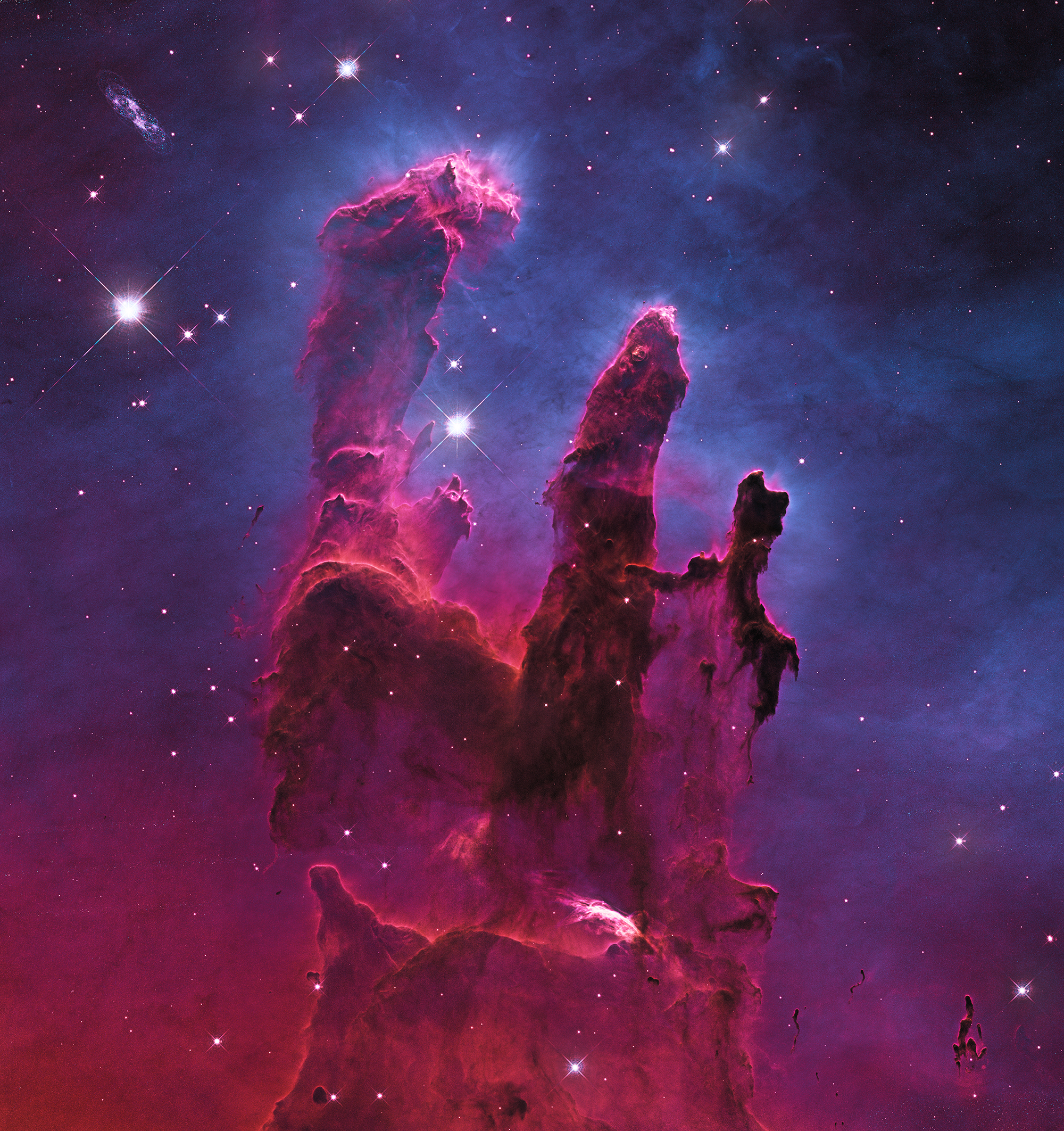 Click on the image for a full resolution version
Click on the image for a full resolution version
M 16 is an emission nebula located in the constellation Serpens Cauda. This nebula is the site of many newborn stars and it has already originated a crowded open cluster. In fact, the designation NGC 6611 belongs to the star cluster, the nebula itself is named IC 4703. This nebula contains several Bok globules (see more detailed explanation about them in the page of the Running Chicken Nebula), as well as many so-called EGGs (Evaporating Gaseous Globules). These latter are to be found at the tips of the “Pillars of Creation”, an impressive structure located just below the center of this image and worldwide known due to the famous image taken by the Hubble Space Telescope (see below).

Image Copyright ESO-NASA-HST
This image became very famous and it popularized the Hubble Color Palette (HST), where a narrowband image is mapped as follows: Halpha to Green, OIII to Blue and SII to Red. This gives this awesome color (sometimes called “false color”). Some people don’t like this color palette, which additionally provides magenta-ish colored stars. But if we process the same image set (available in the Hubble Legacy Archive) with the color palette used throughout this web site, that provides a “natural” color to narrowband images (mapping SII to Red, OIII to both Blue and Green and Halpha both to Red and Blue, to account for Hbeta, all of them with the percentages that allow the “reconstruction” of the nebula’s visible spectrum) then the result has the natural color of the nebula and it is shown below:

Image Copyright ESO-NASA-HST. Processing: Josep Drudis
In fact, it has been determined, using the Spitzer Space Telescope, that the Pillars of Creation were wiped off by the explosion of a supernova about 6,000 years ago, but the light showing its effects will remain traveling to Earth for another 1,000 years approx. In other words, look at them now, that they are still so beautiful!!
This image has been completely reprocessed (December 2016) in such a way as to extract a better resolution, but also to extend the number of different shades of greenish-blue that the Oxygen emission provides. In order to do this, up to four images have been completely processed, with slightly different color mappings, and all have been blended in the final processing. The natural red colors provided by Hydrogen and Sulphur have been kept.
Additional Information
Object
Name(s): M16. IC 4703. NGC 6611. The Eagle nebula
Type: Emission Nebula with Open Cluster
RA: 18h 18m 47s
Dec: -13º 46’ 55”
Constellation: Serpens Cauda
Size (arcmin): 83×51
Magnitude: +6.4
Distance: 6,500 ly
Image
Date: 2016-06-29 thru 2016-08-07
Location: iTelescope.net, SSO near Coonabarabran, NSW Australia
Size (arcmin): 31.5×30.5
Telescope: Planewave CDK 20” f/6.8
Camera: SBIG STX16803 (4096x4096pix)
Guiding: Astrodon MonsterMOAG off-axis guider
Total exposure: 20.5 hours (Ha: 7.5hs; OIII: 7hs; SII: 4.5hs, RGB: 1.5hs)
Processing: CCDStack, Photoshop CC 2015.5 and PixInsight